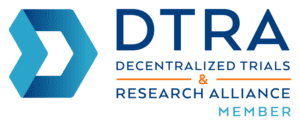Clinical trials operate under a strict framework of regulations and compliance standards, reinforcing the importance of meticulous record-keeping. Well-documented cases such as Vioxx serve as reminders for clinical research sites and academic medical centers conducting clinical trials, highlighting the critical nature of maintaining impeccable organization and regulatory adherence. As the volume of data and documents within each trial continues to expand, the necessity for streamlined processes becomes increasingly evident. However, amidst these complexities, one often underestimated yet impactful factor lies in the establishment and implementation of robust naming conventions. These conventions, when appropriately devised and consistently applied, serve as cornerstones in elevating the standards of clinical trial management. Ultimately, naming conventions play a pivotal role in enhancing efficiency and compliance across clinical trials.
The Foundations of Naming Conventions
At its core, a naming convention is a systematic approach to labeling and organizing files, documents, and data elements. In clinical trials, these naming conventions serve as the backbone of efficient data management. Naming conventions establish a clear framework for naming various documents that can help streamline the document management process, minimize confusion, and ensure consistency across all trial-related materials.
Simplifying Document Retrieval and Navigation
One of the most immediate benefits of implementing robust naming conventions is the simplification of document retrieval and navigation. With standardized naming protocols in place, site staff can swiftly locate the information they need, eliminating the frustration and delays associated with searching through disorganized or ambiguously labeled files. This efficiency not only enhances productivity but also enables faster decision-making, accelerating the pace of clinical trials without compromising quality.
Streamlined Collaboration and Communication
Effective collaboration lies at the heart of successful clinical trial management. By adopting consistent naming conventions, organizations foster a common language that facilitates seamless communication among team members, sponsors, regulatory bodies, and other stakeholders. Whether sharing documents internally or exchanging information externally, adherence to standardized naming practices ensures clarity and minimizes the risk of misinterpretation or oversight. This cohesion strengthens relationships, promotes transparency, and cultivates a culture of accountability throughout the trial lifecycle.
Ensuring Regulatory Compliance and Audit Readiness
Naming conventions play a central role in ensuring regulatory compliance and audit readiness by providing a structured framework for documenting trial-related activities. By incorporating relevant identifiers, such as study codes, document types, and version numbers, into filenames, organizations can demonstrate traceability and accountability in accordance with regulatory requirements. Altogether, this proactive approach streamlines the audit process and instills confidence in regulatory agencies and sponsors. Unquestionably, this reinforces the credibility of both the site and trial.
Facilitating Data Integrity and Analysis
In addition to managing documents, naming conventions extend to the realm of data management, where they play a crucial role in preserving integrity and facilitating analysis. By standardizing the naming of variables, datasets, and data files, organizations minimize the risk of data duplication, ambiguity, and error. Consistent naming conventions enable sites to accurately identify and interpret data elements, ensuring the reliability and validity of study findings. Moreover, well-organized data assets streamline the process of data aggregation, analysis, and reporting. This empowers sites to derive meaningful insights with greater efficiency and confidence.
Implementing Best Practices for Naming Conventions
While the benefits of naming conventions are clear, their successful implementation hinges on thoughtful planning and adherence to best practices. At Complion, a RealTime Software Solutions company, we advocate for the following principles to guide the development and application of naming conventions:
Clarity and Consistency: Choose descriptive, easily understandable names that convey the purpose and content of each document or data element. Maintain consistency in formatting and terminology to avoid confusion and ambiguity.
Relevance and Reusability: Incorporate relevant identifiers, such as study codes, document types, and version numbers, into filenames to facilitate organization and retrieval. Design naming conventions with scalability and adaptability in mind to accommodate future iterations and expansions of the trial.
Collaborative Approach: Involve stakeholders from various functional areas, including clinical operations, regulatory affairs, and data management, in the development of naming conventions. Foster collaboration and consensus to ensure buy-in and alignment across the organization.
Documentation and Training: Document the established naming conventions in a comprehensive guideline or SOP (Standard Operating Procedure) and provide training to all relevant personnel. Foster a culture of compliance and continuous improvement through regular review and refinement of naming practices.
Flexibility and Evolution: Recognize that naming conventions may need to evolve over time in response to changes in regulatory requirements or organizational needs. Remain adaptable and receptive to feedback to ensure the continued effectiveness and relevance of naming conventions.
Conclusion
Implementing naming conventions lays the foundation for clear and consistent guidelines for labeling documents and data. This process streamlines operations, improves collaboration, and strengthens regulatory compliance. Furthermore, as the complexity of clinical trials continues to escalate, adopting a standardized approach to naming conventions becomes indispensable for confidently navigating the intricacies of modern clinical trials.
What’s more, the successful implementation of naming conventions also demands ongoing maintenance. Sites should prioritize staff training to ensure that all team members are proficient in their application and consistently adhere to them. This steadfast commitment to standardization will save time, boost efficiency, and minimize errors in the long term.
Read more: 7 Secrets to Being Audit Ready
Read more: eRegulatory Binder Checklist: What Does the FDA Require?






